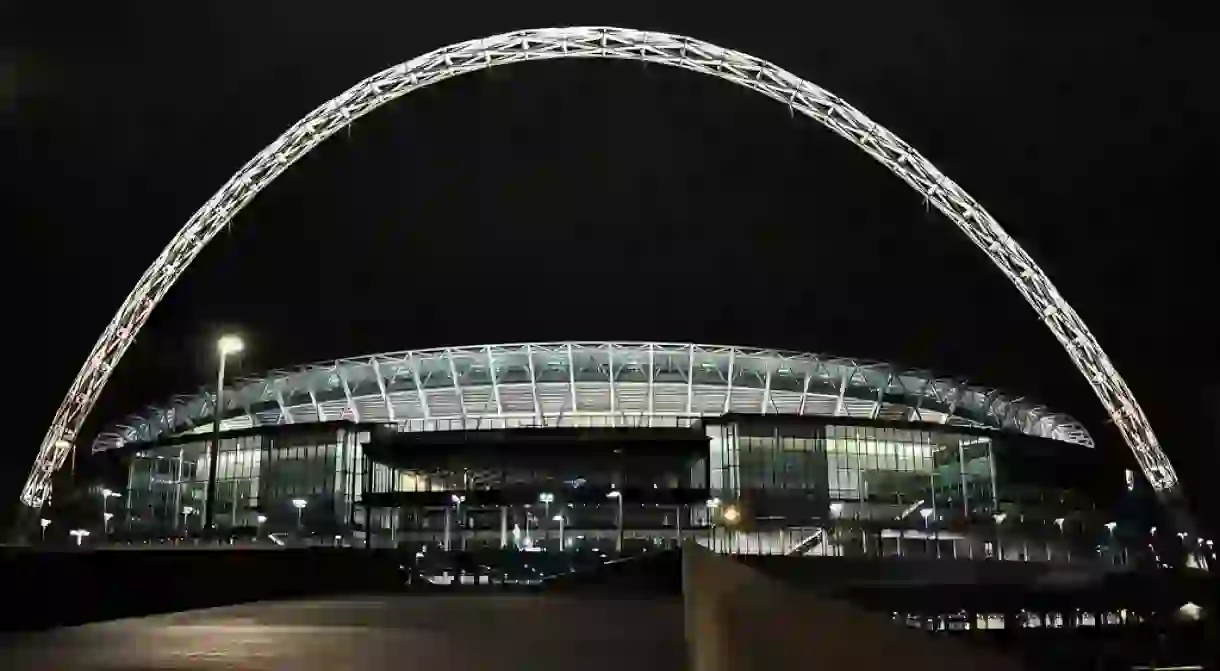The Most Iconic Sports Venues In London

From picturesque grounds along the river, to World Cup-winning pitches, Culture Trip gives you the rundown on some of London‘s most important sporting stadia.
Lord’s
Tucked away in a beautiful part of northwest London, Lord’s is more than 200 years old. Home to the Middlesex Country Cricket side during the domestic cricket season, it is also one of the grounds the England cricket team plays at when hosting touring sides. Widely referred to as the ‘Home of Cricket,’ it houses the world’s oldest sporting museum and includes historic features such as ‘The Pavilion’ (a Grade-II listed building) and ‘Old Father Time,’ a weather vane in the shape of Father Time that signifies the the sport’s laws and traditions. Lord’s is a beautiful venue and a must-see for any history buffs – and on match day look out for the members in their ‘egg and bacon’ coloured blazers and ties.

Tooting Bec Lido
The largest swimming pool in the United Kingdom (91.44 metres long and 30.18 metres wide) is an open-air, fresh water pool in southwest London. Open daily – including Christmas – the venue is completely surrounded by trees so it can only be seen once actually inside, despite sitting in the middle of Tooting Common. Opened in 1906, the pool is filled with one million gallons of water and a quick dip (plus changing in the historic coloured changing rooms along the poolside) is a brilliant way to start your day – but be warned, the water isn’t heated.
What a way to spend a Sunday #slsc #tootingbeclido #coldwaterswimming #thegreatoutdoors #tooting #instagood #photooftheday
A photo posted by Peake Condition (@peakecondition) on Oct 9, 2016 at 4:24am PDT
O2 Arena
Perhaps not a sport-specific venue, the O2 has hosted a number of different major sporting events, with boxing a particular favourite. Situated by the Thames to the east of the city’s business area, the O2 has also become the annual home for the ATP World Tour Finals, which closes the tennis season each year. The arena has hosted NBA games, darts, MMA and was used as the venue for gymnastics during the 2012 Olympics.

Queen Elizabeth Olympic Park
The main location for the the 2012 Olympics, there are still a number of venues on-site that can be used by the public. The London Lions basketball team plays their games at the Copper Box Arena, while the Aquatics Centre and Lee Valley VeloPark are open for swimming and cycling respectively. The athletics stadium (now renamed the London Stadium) has been converted into a football stadium and is now the home of Premier League side West Ham United.

Craven Cottage
While there may be plenty of football stadiums across England’s capital, few offer the quaint, comforting experience that Fulham’s ground offers. The Cottage Pavilion, in the corner of the ground, was built after an oversight in the original design saw the architects forget to factor in the changing rooms in the original design. The Riverside Stand backs onto the Thames and is probably the most beautiful place to have a half-time pint across British football.
Craven Cottage looking 👌@fulhamfc
A photo posted by Will Lemay (@will_lemay) on Dec 4, 2016 at 11:39pm PST
Twickenham
‘The Cabbage Patch’ is the home of English rugby. It opened in 1909 with a game between Harlequins and Richmond, with its first international the following year between England and Wales, and while the capacity then was just 20,000, it now holds 82,000, making it the fourth largest stadium in Europe. Twickenham has hosted the Rugby World Cup final twice (in 1991 and 2015) and is home to the World Rugby Union Museum, which houses an England jersey from the first ever rugby union international in 1871 between England and Scotland.

York Hall
Situated in Bethnal Green, York Hall has held boxing bouts since 1929. The neo-Gothic structure was first opened as Turkish baths, and the baths are still accessible to the public, located in the basement. Boxing greats such as Nigel Benn, David Haye, James DeGale, Ricky Hatton, Joe Calzaghe and Lennox Lewis have all fought in the venue, but it is also known for hosting London and national schoolboy and boys clubs championships.
—————————— #boxing #sports #boxingguru #KO #london #titlefight #fightnight #boxing #warrior #health #boxingnews #photojournalism #yorkhall #britishboxing #photocredit #sportsjournalism #sports #photocred #london #ljaphotography #boxingheads ##boxingscene #boxingfanatik #goodwinboxing A photo posted by SportsShutterLady📷 (@ljaphotography_boxing) on Nov 16, 2016 at 9:25am PST
Wembley Stadium
The England football team’s national home. Having opened in 1923, the stadium was completely knocked down and rebuilt in 2007. The new 90,000-seat stadium hosts all the country’s domestic cup finals, as well as international games. Its most iconic moment came in the summer of 1966, when England beat West Germany in the World Cup Final. Today (mainly to cover its £798m building costs) it welcomes other sports, including rugby, major boxing matches and NFL games. You can see the stadium’s arch from miles around and for those that are interested in fun facts, it has 2,618 toilets – more than any other venue in the world.

Wimbledon
Tennis’ most famous venue sprawls across southwest London, and has been home to the oldest tennis tournament in the world since 1877. For two weeks in June and July every year, the tennis world descends (with glasses of Pimm’s and strawberries and cream in hand) on this particular collection of courts, with the 16,000-seat Centre Court the pick of the bunch. Steeped in tradition (to this day, competing players are still only allowed to wear white), for a great many professional players Wimbledon is the single most important event in the tennis calendar.
Weather forecast for the first week of The Championships 2016: cloudy with a chance of tennis balls 🎾 #Wimbledon #clouds #sky #weather #adventcalendar #Door9
A photo posted by Wimbledon (@wimbledon) on Dec 9, 2016 at 1:16pm PST













